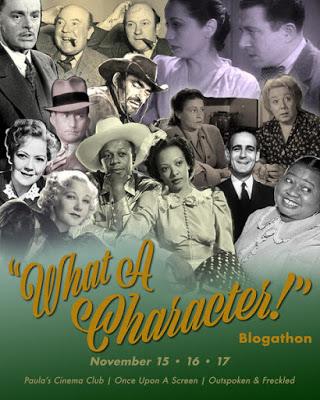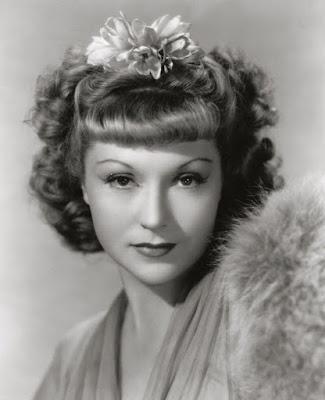
This is my entry for the fabulous What a Character! blogathon hosted annually by Once Upon a Screen, Outspoken & Freckled and Paula's Cinema Club...check these blogs for links to entries from all participating blogs.
~
In perhaps her best remembered scene in a classic film, Leo McCarey's screwball masterpiece The Awful Truth (1937), Joyce Compton delivered a most memorable performance as a dizzy nightclub singer with an equally dizzy act:
She would be typecast in this sort of role for much of her career, but there's more to Joyce Compton's story than her turns as scatterbrained, Southern-fried blondes.

Olivia Joyce Compton was born in Lexington, Kentucky in 1907, the only child of Henry and Golden Compton. Following her father's many schemes and dreams for quick success here, there and everywhere around the U.S. and Canada, the family would move constantly. In 1925 the Comptons came to Los Angeles and soon enough Joyce would enter and win the first round of a beauty contest for young movie hopefuls. Extra work kept her busy until she was signed by First National at $100/week (just under $1,500 in 2019 dollars). Her first role under contract was a small one in What Fools Men (1925) starring Lewis Stone. She next appeared in supporting roles in Broadway Lady (1925) with Evelyn Brent and then Syncopating Sue (1926) starring Corinne Griffith.
Joyce's career got a big boost in 1926 when she was chosen as one of the year's WAMPAS Baby Stars. WAMPAS stood for Western Association of Motion Picture Advertisers (of the United States). Each year from 1922 and 1934 (except for 1930 and 1933) the group (usually) chose thirteen young actresses as promising newcomers and introduced them at a party known as the "WAMPAS frolic." 1926 would bring one of the most successful crops of WAMPAS babies ever, a group that, along with Joyce, included Mary Astor, Dolores Costello, Joan Crawford, Dolores Del Rio, Janet Gaynor and Fay Wray.
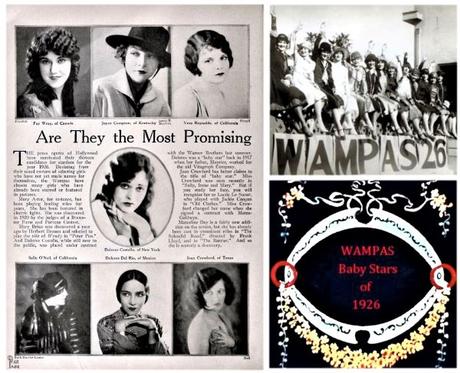
Though she would eventually be dropped by First National, Joyce made an auspicious debut in "talkies" with two Paramount films starring Clara Bow, The Wild Party and Dangerous Curves, both in 1929. The studio was pleased enough with her performances that she was asked to sign a contract, but she turned it down because Fox had offered her a good role in John Ford's Salute (1930).
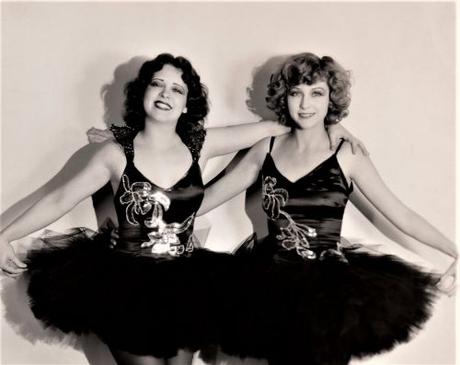
Clara Bow and Joyce Compton in Dangerous Curves (1929)
Soon after, Joyce was signed by Fox. Feeling flush, she would splurge on furs and a grand piano would rent a house in Benedict Canyon below what had been Rudolph Valentino's home and around the corner from Jean Harlow's.
It was on her fifth Fox film of 1930, Lightnin', starring Will Rogers, that she met Joel McCrea. The film was shot on location in Lake Tahoe and the pair was involved in a romance that lasted the length of the shoot. Their careers took them in different directions afterward and they would go their separate ways, but she would always remember him fondly.
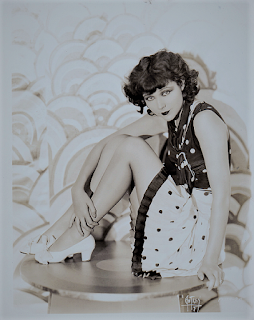
Fox's new look for Joyce Compton
The direction Joyce Compton's career was about to take was sideways and down. Six months after she lost everything she'd saved in the December 1930 collapse of the Bank of Hollywood, Fox decide not to renew its option on her contract. Joyce would later put the blame on the studio's attempt at making over her look and type, commenting on a Hollywood studio tendency to "sign you for what you have to offer, mess around and ruin it all, then give up and toss you out."Joyce would next make her way to New York in search of work on stage or film but ended up returning to Hollywood three months later having had no luck in the Big Apple. It was around this time that she would begin to build her reputation as a comedienne of the Southern-accented dumb blonde variety.
Looking over Joyce Compton's filmography of nearly 160 credited and uncredited roles, it becomes apparent that during the busiest years of her film career, the '30s and '40s, her credited roles were mostly in programmers and B-movies. Her appearances in better films, juicy as her performances might be, were often uncredited bit roles, for example Magnificent Obsession (1935), The Toast of New York (1937), They Drive by Night (1940), Ziegfeld Girl (1941), Mildred Pierce (1945), Night and Day (1946) The Best Years of Our Lives (1946) and Sorry, Wrong Number (1948). Watching Mildred Pierce recently, I paid special attention to Joyce's turn as a waitress accused of stealing tips as Mildred, not yet a waitress herself, sits in the restaurant watching the fracas. In the few moments allotted her, Joyce added maximum spice and spunk to the scene. She was a real pro.
Joyce fared better in the film she made just prior to Mildred Pierce. Christmas in Connecticut (1945) gave her an opportunity to shine in a nice little supporting role as a nurse engaged to Dennis Morgan before he meets Barbara Stanwyck. This time the part was more than a bit and in a popular hit with stellar co-stars (along with Stanwyck and Morgan, Sydney Greenstreet, Reginald Gardiner, S.Z. Sakall and Una O'Connor). Of course her character, Mary Lee, is a ditzy blonde from the South, Joyce's specialty by then.
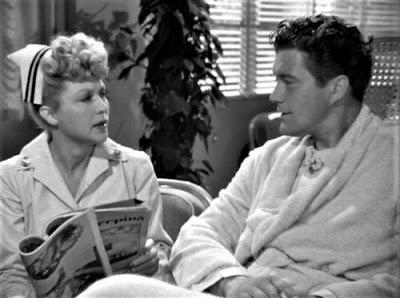
Joyce Compton and Dennis Morgan in Christmas in Connecticut (1945)
Joyce's acting career tapered off dramatically in the 1950s when she made few films and sporadic guest shots on TV series like The Life of Riley and 77 Sunset Strip. Her final appearance came on the series Pete and Gladys in 1961.Though she never made it "big" in Hollywood, Joyce Compton worked in movies steadily for nearly 25 years. She married once, briefly, and dated many men, some well known and some unknown. She had many friends and many interests - including painting and designing her own clothing. She did well enough and was smart enough to build a home of her own, and she supported her parents, who lived with her.
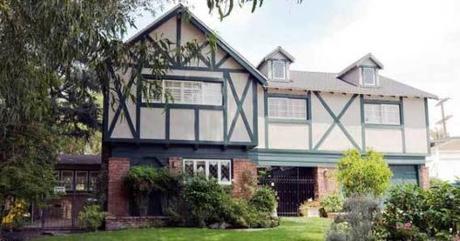
The house that Joyce built
Joyce Compton seems to have been something of an outlier in Hollywood. She was self-reliant and strong-minded and she didn't "play the game." The game she didn't play, essentially, was the casting couch game and its many variations. She developed a method - one designed to be soft on powerful male egos - of evading the advances of studio heads, producers, directors, actors, agents, playboys and others of clout. She was deservedly proud of her independence and her reputation, but I can't help but wonder if her refusal to fall in line was one reason her career didn't quite fulfill it's early promise.
At the end of her life, she didn't seem to have regrets. Looking back over her nearly 90 years, she would say that her parents and the home she built were what was most important to her. She credited her mother with having the "idea and vision" behind her choosing a movie career and credited both her parents for their encouragement and support during her career. And she would recall a recent conversation with an old friend who told her she loved her because she was "so unique." Joyce's wry reply was, "I'm so unique, I'm practically a peculiarity." What a character, indeed...
